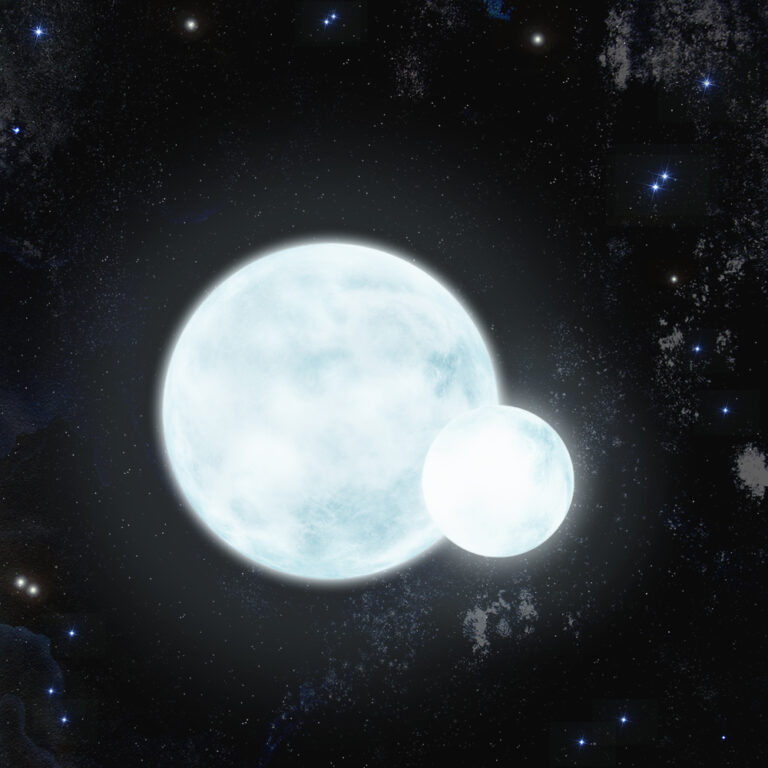A New Variety of Pulsating Star Emerges as a Survivor of Stellar Collision
A team of astronomers from the UK, Germany and Spain have observed the remnant of a stellar collision and discovered that its brightness varies in a way not seen before on this rare type of star. By analysing the patterns in these brightness variations, astronomers will learn what really happens when stars collide. This discovery will be published in the 27 June 2013 issue of the journal Nature.
Stars like our Sun expand and cool to become red giant stars when the hydrogen that fuels the nuclear fusion in their cores starts to run out. Many stars are born in binary systems so an expanding red giant star will sometimes collide with an orbiting companion star. As much as 90% of the red giant star‘s mass can be stripped off in a stellar collision, but the details of this process are not well understood. Only a few stars that have recently emerged from a stellar collision are known, so it has been difficult to study the connection between stellar collisions and the various exotic stellar systems they produce. When an eclipsing binary system containing one such star turned up as a by-product of a search for extrasolar planets, Dr Pierre Maxted and his colleagues decided to use the high-speed camera ULTRACAM to study the eclipses of the star in detail. These new high-speed brightness measurements show that the remnant of the stripped red giant is a new type of pulsating star.

Many stars, including our own Sun, vary in brightness because of pulsations caused by sound waves bouncing around inside the star. For both the Sun and the new variable star, each pulsation cycle takes about 5 minutes. These pulsations can be used to study the properties of a star below its visible surface. Computer models produced by the discovery team show that the sound waves probe all the way to the centre of the new pulsating star. Further observations of this star are now planned to work out how long it will be before the star starts to cool and fade to produce a stellar corpse (“white dwarf'”) of abnormally low mass.
Dr Pierre Maxted from Keele University, who led the study, said “We have been able to find out a lot about these stars, such as how much they weigh, because they are in a binary system. This will really help us to interpret the pulsation signal and so figure out how these stars survived the collision and what will become of them over the next few billion years.”
This article is republished from PhysORG under a Creative Commons license. Read the original article.
Do not forget to share your opinion with us to provide you with the best posts !




0 Comments